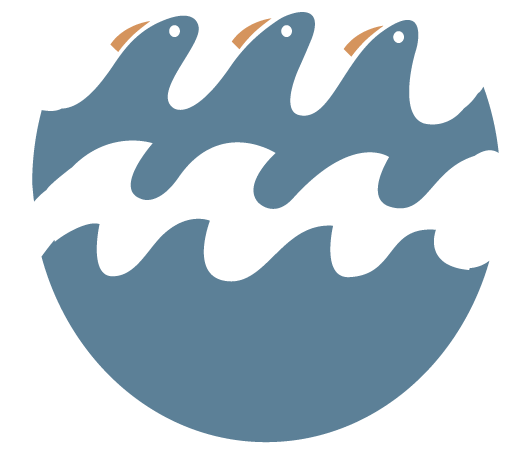On my home beaches the best of the fall and winter low tides take place in darkness. Good low tides and daylight start to line up in March, and morning tidepooling, which we first see in April, lasts through summer. Cloudy, rainy, or fog-shrouded conditions impart a moody impression to intertidal scenes. I’ve chosen a sequence of five closeups to illustrate this. The sequence begins on the high rocks, above most tidepools. I like to start high, idling, picking my way along with the fall of the tide. Next in the sequence, the middle reach, and then the intertidal depths. My sequence concludes when it emerges, just like I do, onto higher ground with the make of the tide.
Nucella

Shy Nucella ostrina comes in a variety of colors and patterns. It’s not unusual to see bold stripes and even bright orange versions. This one’s faint stripes and the interplay of pale and dark magenta fits my moody theme.
Endocladia

Endocladia is a high intertidal red that goes by nail brush and other aliases. This tuft appeared on my Instagram feed on May 31, 2019.
Halosaccion

A curious favorite, Halosaccion won’t show up until you make your way down to the middle reaches, if it shows at all. The young sea sacs seen here are turgid with sea water. Try sometime giving one of the sacs a squeeze. Large late season sacs grow limp and discolored suggesting the common name dead man’s fingers, a moody eponym.
Prionitis and Constantinea


The lowest reaches are marked by an abundance of pinks and reds. I’ll let Prionitis, bleach weed, and ever-lovely Constantinea, cup and saucer (just the saucer here), both accompanied here by crustose reds, do the talking.
Finally, urged out of the lowest intertidal by the push of the tide, meet a mystery of mine. The radiating ridges and subtle rings on the shell of a well camouflaged limpet are captivating. I include this one among my favorites because I can’t name it.

It’s an important tidepool practice, once in a while, to let the mystery be.


It’d have been way more mysteries if I’d had to name them LOL. Beautifully captured
Ha! I’ve got plenty.
What a great introduction to these beauties… ones I’ve never encountered. The Prionitis and Constantinea are simply gorgeous. You found the perfect specimens and photographed them beautifully.
Perhaps I need to tune in to visits at “the best of the low tides”… though I’m wondering about locations. Rocks that only emerge at the best of the low tides rather than open sandy beaches??? Bandon and Yaquina Head have some opportunities it seems, but can’t think of any locations here on the south coast offhand. But first we’re heading East into the Siskiyous for some beauty in botanical land…
Thank you! I don’t know much about the Siskiyous, but I know they are botanically rich. We’re going to Ashland to see Macbeth and Alice in Wonderland, so there’s a chance I’ll get a taste. Back on the beaches, I rarely get south of Cape Perpetua. In Bandon, Coquille Point is good for tourists like me. The one time I went I saw a tone of neat stuff. Walking a sandy beach on a good low tide is super cool too, often great beachcombing, but zonal landmarks are few, and you won’t see the diversity you’ll see on the rocks. Planning your hikes by the tide will help a lot, at least it helps me.
You’re reminding me that this past winter we found quite a few intact sand dollars after the bigger storms. Beachcombing is great fun, but I need to *remember* to pay attention to the minus tides as I used to when living closer to Bandon. That was back in the day when the sea-stars were still hanging out down there. It was fascinating. Then again, I rarely get north of Perpetua except when we visit the grandkids at Silver Falls. I guess we have the coast covered! 😉
So love your macros 🙂
It seems that hitting the nail on the head is a bit of a mystery, so thanks for letting me know.
I can be quite hit and miss too